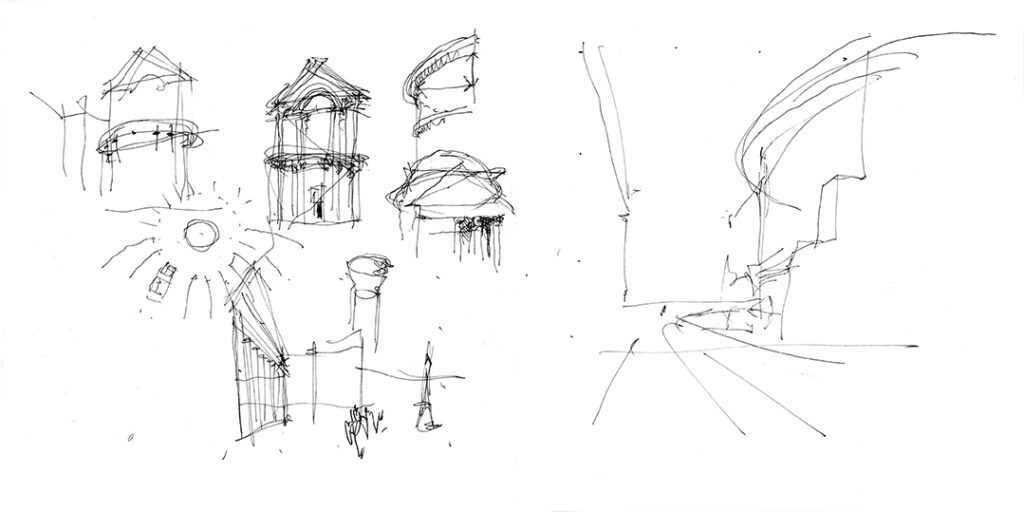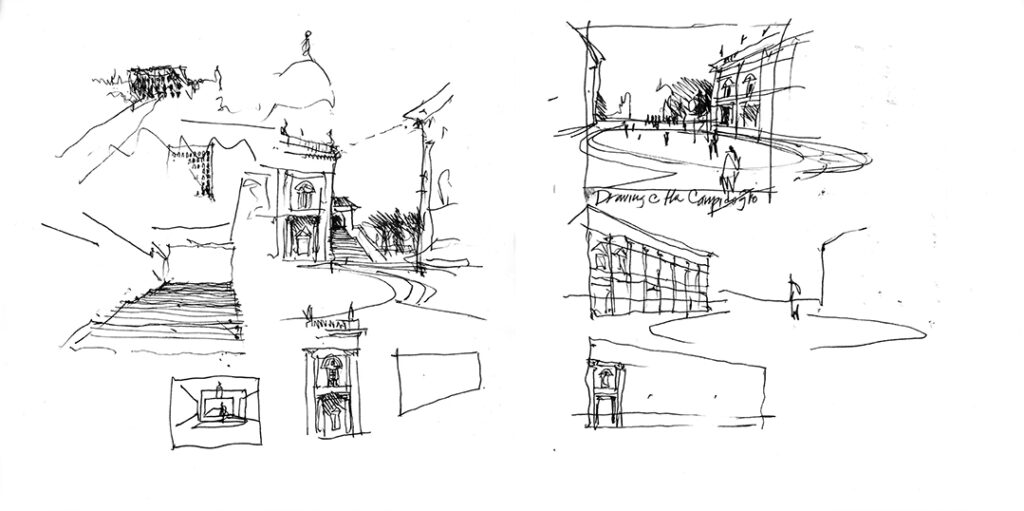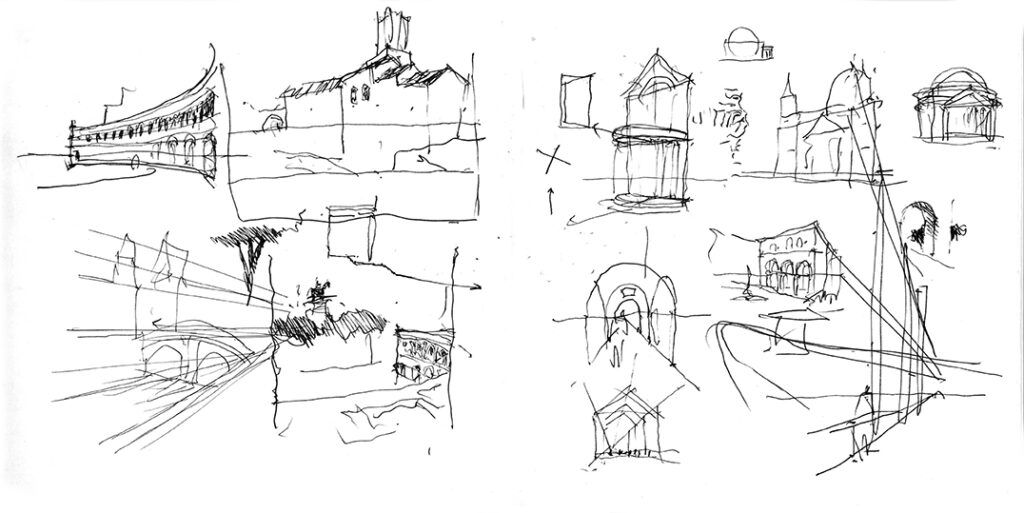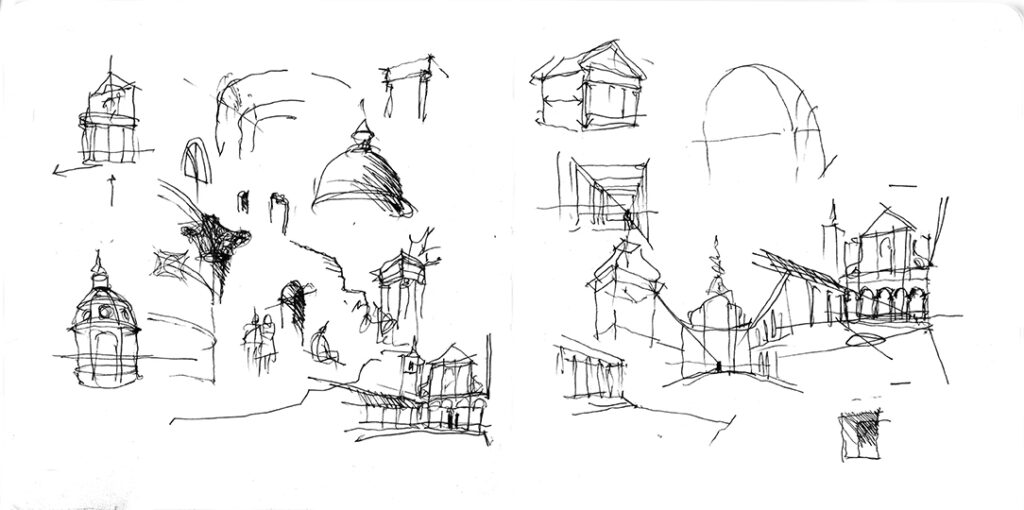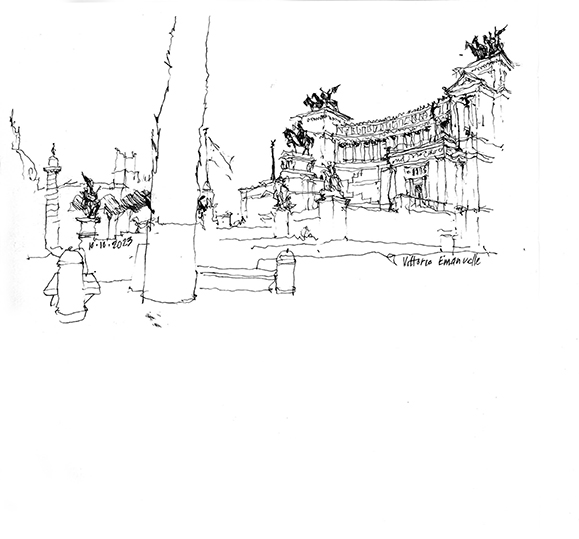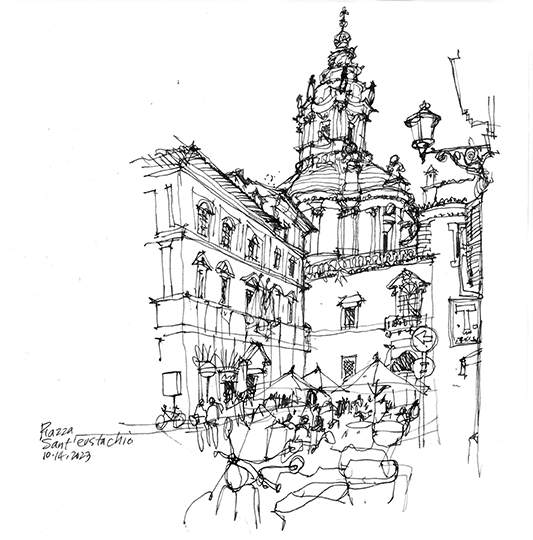
Having been fortunate to be able to teach in Rome a few times, I have sketched the same sites on multiple occasions. It is interesting how these representations differ, either because of circumstances, such as heat or rain, a change in pen nibs or paper surface, or a slight change in viewpoint. Here, for example, are three drawings of Borromini’s Sant’Ivo alla Sapienza as its spiraling tower is seen rising above its surrounding courtyard and palazzo. I often encountered this view from the Piazza Sant’Eustachio as I walked from the Pantheon on my way to the Campo de’ Fiori.
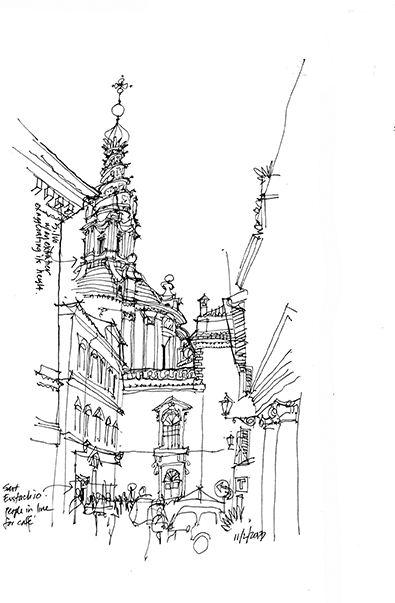
The first view is my attempt from 2023. The second, from 2013, shows the difficulty I had in showing the relative scale of the church tower relative to its foreground and surroundings—the height of Sant’Ivo appears to be exaggerated.
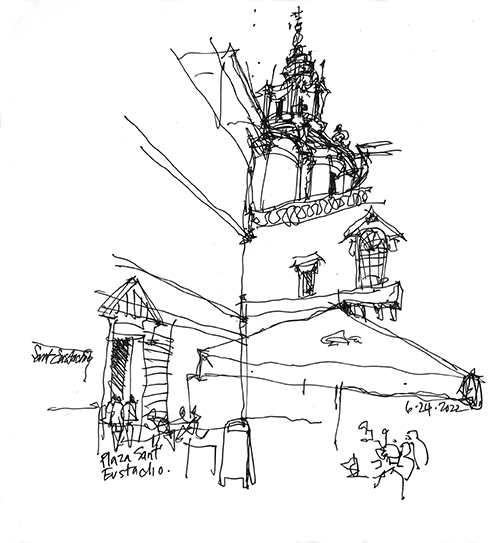
The third, sketched in the extreme heat of the summer of 2022, is from a closer vantage point, nearer to the famous Sant’Eustachio Caffè.

